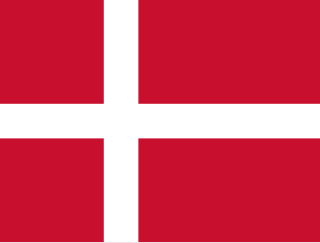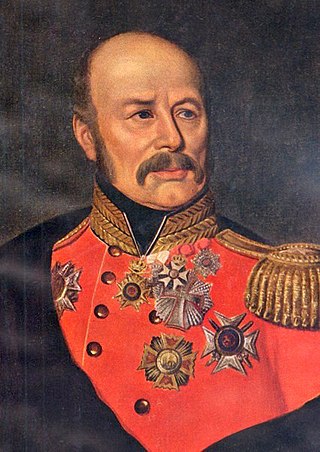Related Research Articles

The Danish West Indies or Danish Virgin Islands or Danish Antilles were a Danish colony in the Caribbean,consisting of the islands of Saint Thomas with 32 square miles (83 km2);Saint John with 19 square miles (49 km2);and Saint Croix with 84 square miles (220 km2). The islands have belonged to the United States as the Virgin Islands since they were purchased in 1917. Water Island was part of the Danish West Indies until 1905,when the Danish state sold it to the East Asiatic Company,a private shipping company.
This timeline of the history of piracy in the 1680s is a chronological list of key events involving pirates between 1680 and 1689.

Peter Carl Frederik von Scholten was Governor-General of the Danish West Indies from 1827 to 1848.
Gabriel Milan was a Sephardic colonial administrator and planter who served as governor of the Danish West Indies from 7 May 1684 to 27 February 1686. Though he mainly went by the name of 'Gabriel Milan',he identified himself as "Don Franco de Tebary Cordova" in his correspondence with King Frederick III of Denmark-Norway. Like many of the early Danish West Indies governors,Milan's term was short,as he disagreed with the Danish management on several issues. He was called to Denmark after less than two years and executed after a lengthy trial.
Jørgen Iversen Dyppel,also called George Iversen or Ifversen,or sometimes Doppel in Knox,was the first governor of the renewed establishment of St. Thomas in the Danish West Indies,from 1672 to 1680. His rule was marked by the work to construct a functioning colony and the difficulties of such a task.
Nicolai Esmit was governor of St. Thomas in the Danish West Indies from 4 July 1680 - November 1682. He was born in Holstein. His younger brother Adolph Esmit succeeded him as governor of St. Thomas.
Mikkel Mikkelsen was Governor-General ad interim of St. Thomas in the Danish West Indies,from 27 February 1686 to 29 June 1686. Little is known about his life,aside from his short term as Governor during the turbulent early days of company rule.

Christian Henrik Arendrup was Governor-General of the Danish West Indies from 1881 to 1893.
Christopher Heins was a lieutenant and interim Governor-General of The Danish West Indies during two short periods,respectively 29 June 1686 to March 1687 and from October 1688 to 1689. Little is known about his career or personal life outside his reigns under company rule.
Johan Lorensen was a Danish colonial administrator who twice served as governor of the Danish West Indies from October 1689 to 17 September 1692 and 7 April 1693 to 19 February 1702. Little is known about his career or personal life outside his governorship in the West Indies.

Conrad,Count von Reventlow was a Danish statesman who was "Grand Chancellor of Denmark",a predecessor title of the Prime Minister of Denmark,from 1699 until his death. His chancellorship occurred during the reign of King Frederick IV.
Jean Hamlin was a French pirate active in the Caribbean and off the coast of Africa. He was often associated with St. Thomas's pirate-friendly Governor Adolph Esmit.
John Philip Bear,last name also spelled Beare,was a 17th-century English pirate active in the Caribbean who also served with the Spanish and French.
Jacob Evertson was a Dutch buccaneer and pirate active in the Caribbean. He escaped Henry Morgan and sailed with Jan Willems for several years.
George Bond was an English pirate active in the Caribbean. He was known for acting in league with the pirate-friendly Governor of St. Thomas,Adolph Esmit.

Edmund Cooke was a merchant captain,buccaneer,and pirate. He is best known for sailing against the Spanish alongside Bartholomew Sharp,John Coxon,Basil Ringrose,Lionel Wafer,and other famous buccaneers. Cooke's flag was red-and-yellow striped and featured a hand holding a sword.
Wolf Henrik von Kalnein was a Prussian noblemen in Danish service. His most notable contributions were as acting governor of the Danish colony Tranquebar in India,and as colonel in the Danish Auxiliary Corps in Ireland,where he was killed in action at the siege of Limerick.
George Spurre was an English pirate and buccaneer. He is best known for sacking Campeche and for joining a large buccaneer force which captured Veracruz.

John Cook was an English buccaneer,privateer,and pirate.
Governor Esmit may refer to:
References
- 1 2 3 4 Bricka, Biografisk, 599
- ↑ Westergaard, Danish West Indies, 29
- ↑ Dookhan, Isaac (1974). A History of the Virgin Islands of the United States. Kingston, Jamaica: Canoe Press. p. 112. ISBN 9789768125057 . Retrieved 28 August 2017.
- ↑ Westergaard, Danish West Indies, 30
- 1 2 3 Haring, Buccaneers, 137